What Is Permaculture?
Permaculture is more than just gardening – it’s a holistic approach to designing a sustainable and self-sufficient ecosystem that works in harmony with nature.
Permaculture integrates the landscape with the people, creating a harmonious and beautiful space that provides for our needs while supporting the planet.
By incorporating permaculture practices in your garden, such as organic gardening, polyculture, mulching, and rainwater harvesting, you can create a thriving and low-maintenance garden that not only saves you time and money but also helps the environment.
Permaculture has gained attention worldwide because of its potential to address pressing ecological and societal challenges, including climate change, resource scarcity, and food insecurity.
By implementing best practices in land management, soil building, water conservation, and waste reduction, permaculture offers a viable solution for a healthier and more sustainable future.
Benefits of Permaculture




Become self sufficient and sustainable
• You don't need a big backyard to establish a self-sufficient garden and ensure food security in your home.
• Permaculture can save you time and money in the future in many ways:
• By using natural methods to grow food, save on groceries and reduce your overall food costs.
• Save money on water and electricity bills by incorporating renewable energy systems.
• By switching to organic gardening, you won't be spending money on expensive pesticides, herbicides, etc.
• You'll also be able to make your own fertilizers and compost.
• Permaculture encourages the reuse and recycling of materials, which can save you money on building and landscaping projects.
• Transition to organic gardening, tips on treating pests and diseases is a part of a design.

Improve your yield
• You will grow more food from small space with companion planting techniques, crop rotation and vertical planting.
• It is possible to grow food for whole family, all year round using season extension techniques like greenhouses and cold frames, and growing crops with different maturation times.
• Creating polyculture and increasing biodiversity can help you control pests and diseases, resulting in a more productive garden than growing each plant separately.
• You will build soil health by adding organic matter, compost, and cover crops. It can improve soil structure, fertility, and water-holding capacity, leading to healthier and more productive plants.
• Efficient water management techniques such as rainwater harvesting, drip irrigation, and swales can ensure that plants receive the right amount of water, leading to better yields.

Enjoy the nature
• By designing your garden with natural features like ponds, bird feeders, and native plants, you can attract a variety of wildlife to your yard, providing an opportunity to observe and appreciate nature.
• Become healthier by eating tasty, rich food from your garden, grown without the use of chemicals or pesticides.
• Permaculture emphasizes the importance of outdoor living spaces, such as patios, decks, and outdoor kitchens, that allow you to spend more time outside and enjoy nature.
• Surround yourself with the healing power of nature.

Help to heal the planet
• By improving biodiversity and a chemical-free gardening.
• By regenerating degraded soils.
• By reducing your carbon footprint and storing carbon in your garden soil and plants. Artificial grass and paved gardens are some of the worst choices when it comes to being environmentally friendly.
• By eating free food from your garden instead of buying long-distance transported fruits and veggies, which relies on fossil fuels.
•Take control of your food production and reduce reliance on industrial agriculture and its detrimental effects on the environment.
AND MANY MORE...

What is included in permaculture design?
• Specific plant list with quantities needed, including suppliers and their prices.
• Garden plan with plants placement and best varieties.
• 3D garden plan to help you to visualize the layout and aesthetics of your garden more clearly, providing a realistic preview of the final result.
• 3-4 years crop rotation plan.
• Companion planting.
• Cover crops.
• Spacing between plants and other useful information for beginner gardeners if needed.
• Tips on how to increase soil fertility.
• Implementation task list with a practical timetable.
• An estimated cost analysis for the full implementation of the design.
• Useful tips, ideas, tools and equipment to consider for implementation, and more.
Visit our website’s blog section to explore an inspiring examples of garden projects.
Our Services
Phone Consultation
We will answer all your questions about the project and our services. The initial telephone consultation is free.
You can also send us message on Messenger/WhatsApp/e-mail or use the chat function here on website.
You will provide us with the most important information in our design questionnaire to help us understand and meet your design needs.
Thanks to this, you will have time to think about the answers and we will have the information we need.
Site Survey
Permaculture Design
We will explore and discuss the best options for you.
The goal is to create a functional, productive and beautiful system with a high probability of successful implementation by you.
The time to implement the project depends only on you, which we will take into consideration to create a practical timetable.
The project may take from a month to several months to complete. This will be agreed with you after completing the questionnaire.
QUESTIONS?
Whether you’re curious about project completion time, plants, design, or prices, we’re here to answer any questions.

